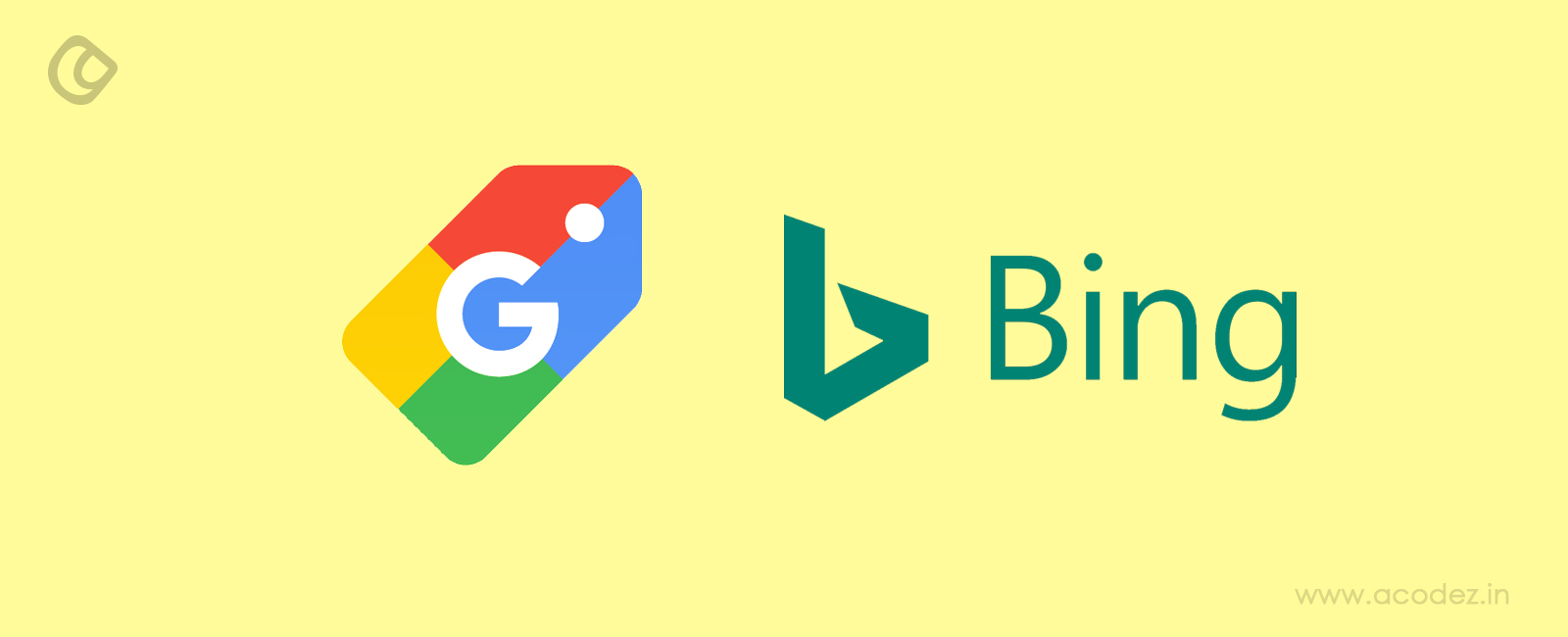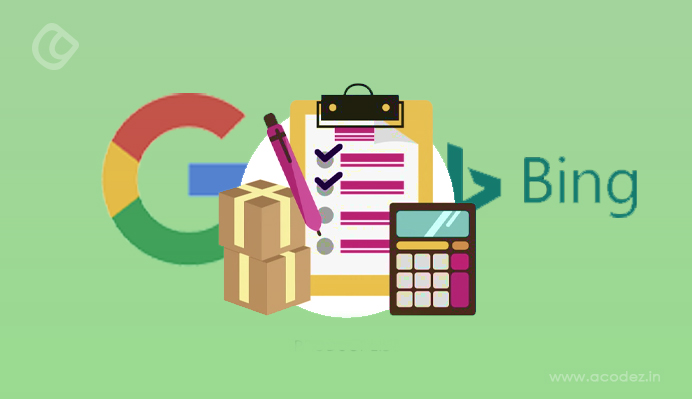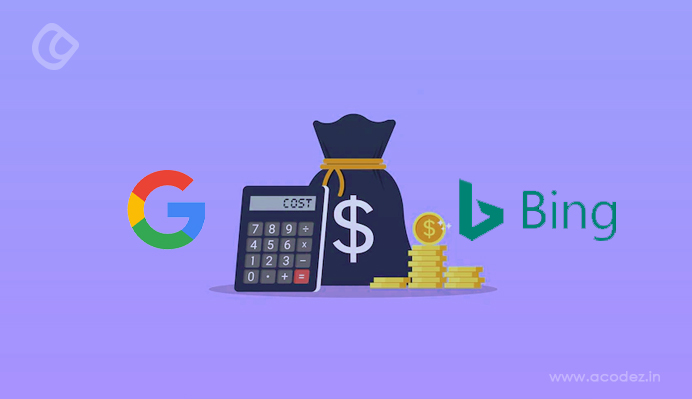Google Shopping Vs. Bing Shopping: Which One Is Best for Your Business? Both have their own strengths & weaknesses. Here is everything You Need to Know
In the world of paid advertising and search, Google and Microsoft have competed in some way or another for the past two decades. There have been countless upgrades since 2006 as the two search behemoths compete for market share.
With the steady expansion of eCommerce, the emphasis has turned to better product ads. While Google may have a sizable part of the search market, you shouldn’t dismiss Bing entirely. Even if it’s only a small percentage of the market, that’s still a large number of people—and you can bet that your consumers are among them. Ignoring one in favor of the other may mean your business losing out on some extra visibility.
In this article, we’ll compare Google Shopping with Bing Shopping (now known as Microsoft Advertising). We’ll give you a brief overview of the two platforms and tell you which platform gives your business or eCommerce website an advantage when it comes to product ads.
Different Platforms, but Both Are Worth the Investment
Google Shopping and Bing Shopping are both worth your time, but each has its own perks.
As mentioned above, Google is the dominant force in search engines with about 86.19 percent of the market share as of December 2021. That means you’re likely to reach more people by adding Google Shopping ads to your business website. But Microsoft isn’t about to let its rival have all of the glory.
Bing Ads released a new version of its product ads platform for businesses to use on their websites. This upgraded platform, known as Bing Product ads, offers several advantages over its predecessor including automatic syncing with Merchant Center. Merchant Center is an important feature that allows retailers to manage their product feeds across multiple sales channels. Knowing that Google Shopping also supports this makes either platform a viable option for your business.
Both Google Shopping and Bing Product ads allow you to display product images, prices, and titles on your website using a widget with HTML code provided by the platform of choice. If you don’t have any experience implementing this type of feature, don’t worry! Both platforms offer instructions so you can quickly get up to speed without too much effort.
Google Vs Bing Market Share
The best way to reach more customers is definitely with Google Shopping ads since it has such a large market share, but that doesn’t mean just ignoring Bing Product ads is always the right decision. Many people use Bing as their primary search engine because Microsoft ensures that its customers will find what they’re looking for regardless of which platform they prefer to use for search.
In addition, Google Shopping ads may not be available in certain countries. If you sell products internationally, Bing’s global reach could save the day by allowing your business to show up on local searches for customers in other countries.
Google Vs Bing User Demographics
With a large market share comes a big audience, but that doesn’t mean Google has a monopoly on user engagement. This is especially true when it comes to Bing Product Ads and its users’ demographics compared with Google Shopping ads users’ demographics since they are platforms from different companies.
With a median age of 45 years and almost half of users above the age of 45, Bing users are generally older. With a third having received a bachelor’s degree and 17% having completed graduate school, Bing users are well-educated.
These demographics indicate that Bing ads users aren’t just looking for the cheapest price—they’re interested in quality and in making a purchase based on their needs. With almost half of Bing Product ads users having an income in excess of $75,000 and 38% above $100,000, these people have money to spend. If this audience sounds like it’s up your alley when it comes to product sourcing or marketing products, definitely consider adding Bing Product ads to your business website.
Google Shopping Ad formats vs Bing Shopping Ad Formats
When you add Google Shopping ads to your eCommerce website, you have three different ad styles from which to choose: image only, text only, or image with text. You can also set a budget, a daily budget, or no budget at all. Alternatively, Bing Ads offers users the ability to create image and text ads with similar formats. However, using keyword targeting is less common on Bing than on Google Shopping because keywords aren’t as prominently displayed in ads on the search engine network. Even though Bing Product ads don’t offer this feature, you can still add a maximum of ten product categories to your campaign in order to target specific purchasers with certain interests based on what they looked for in their previous searches.
Product Listing Information on Google Vs. on Bing
Bing allows advertisers to place price ranges in ads, but Google doesn’t. The information you choose to include in your product feed will be the same on both platforms—quantity, brand, size, color, and variant are all acceptable values that can help customers find exactly what they’re looking for quickly. If you offer more than one of each type of item à la carte or as part of a set, you’ll need to use conditional formatting for this purpose.
Since product titles are often truncated by search engines on both Bing Product ads and Google Shopping ads, including interchangeable keywords is another way to ensure that users who are interested in this feature have the opportunity to click through directly from the ad instead of having to go back to the search results. This is also important for users with disabilities, who may need to convey specific product details in order to find the ideal item.
Ad Placement Options on Google Vs. on Bing
Since you can’t use negative keywords on Bing Product ads, it’s even more crucial than usual to ensure that your products are properly categorized and that each ad includes only products within this category range. However, if you’re trying to reach users whose common search terms show they’re interested in particular products or types of products.
For example if someone searches for “dining room table” but wants a round one, you could set up a campaign with custom filters targeting these specific items while including all other items from the same range within the feed.
Google Shopping ads allow users to choose from product groupings such as brand, category, and price to fine-tune their campaigns. For instance, excluding certain items by using negative keywords can ensure that unrelated products aren’t triggering your Google Shopping ads. This is also helpful if you decide to introduce new or refreshed products in the future since it gives you a less cluttered ad space than traditional text ads and allows you to attract the right kind of attention for these items specifically.
Product listing information on Google Product Listing Ads vs on Bing Product ads remains similar despite platform differences. You should include high-quality images with accurate captions that highlight critical product details; don’t forget that users will likely convert based on color and size when given more than one of the same item.
Since Google Product Listing Ads and Bing Product ads operate on a pay-per-click (PPC) model, including special offers and discounts for new or existing customers can boost conversions even more by making your products seem like a better value than your competitors’.
Google Shopping Costs Vs. Bing Shopping Costs
The average CPC for Google Shopping ads is $0.66 according to WordStream’s 2019 Performance Benchmarks Report, while the average CPC for Bing Product ads is $0.46. For some industries, this doesn’t mean much, but in others, it makes all the difference between winning and losing potential business—especially if you’re selling high-ticket items such as cars or real estate.
Commission rates for Google Shopping ads are much higher than those of Bing Product ads, but since these platforms operate on a PPC model, you’ll receive the bulk of your revenue from the commissions you earn through ad clicks anyway.
Since Google Shopping ads display in both image and text formats while Bing Product ads only show up as image-based listings, it’s more likely that customers will click on them and that you’ll get better advertising coverage across multiple devices and resolutions if they’re utilizing mobile devices to browse for products online.
Google Shopping Vs. Bing Shopping: Which One Is the Best for Your Business?
By now, you probably know how important it is to implement online marketing campaigns for your eCommerce website if you hope to grow your business and eventually surpass your competitors. While Google Shopping ads and Bing Product ads are two of your best options for reaching customers online, they each have their own strengths and weaknesses.
Google Shopping is good for retailers who want to increase visibility for existing products on the market as well as those with diverse product catalogs; you can promote one item or multiple items at once with this platform. It also offers greater flexibility in terms of ad placement, bidding strategies, and more customization options than Bing Product ads do—especially if you’re offering higher-end products that need plenty of room to shine against the competition.
Bing Shopping has proven itself time and again as a dependable way to connect with customers shopping through image-based listings on PCs, tablets, and even smartphones. The lower CPCs and higher CTRs that Bing Shopping ads enjoy compared to Google Shopping ads are still impressive, but this platform has yet to match the level of customization for retailers with diverse product catalogs that Google Shopping offers.
Select which platform you’re most comfortable with before getting started with your campaigns—this can take some time upfront since you’ll need to dedicate time toward learning about each ad type in addition to what makes them unique.
From there, create new shopping campaigns using the customer segments and bidding strategies built by your team so you know which items are performing well online based on demographic data such as age, gender, interests, location, etc. This way, you can monitor performance across multiple devices and screen resolutions; adjust bids, ad text, images, and product titles; monitor conversion rates; and more.
Conclusion
As with any online advertising campaign, the results of your Google Shopping vs Bing Shopping efforts will depend on your ability to build a highly targeted customer list before you begin. However, by leveraging user data gathered from these platforms as well as audience insights gained through search engine marketing and website retargeting, you’re all but guaranteed to improve ROI and boost sales online.
Acodez is a leading web design company in India offering all kinds of web design and development solutions at affordable prices. We are also an SEO and digital marketing agency offering inbound marketing solutions to take your business to the next level. For further information, please contact us today.
Looking for a good team
for your next project?
Contact us and we'll give you a preliminary free consultation
on the web & mobile strategy that'd suit your needs best.









